In last year’s Top 10, I proclaimed that 2019 was a weird year for games, and an excellent year for Henry.
I suppose it’s only fitting that 2020 was an excellent year for games, and the weirdest year for us all.
I’ll avoid a personal recap of the last 12 months, because who the hell wants that? Fingers crossed that 2021 is a massive improvement. If you’re reading this, I hope you’re staying healthy and please do reach out when we’re all vaccinated so we can go for a drink and chat about something other than last year. Though, what else is there to talk about?
It’s only fair that 2020 would also bring us an onslaught of terrific video games. From top to bottom, this is the strongest Top 10 on the 500, even superior to 2017. It was one of the only times I’ve had to seriously debate which game should be number 10 and which were the unfortunates to be left off. The notion that Monster Train, Streets of Rage 4 and Gears Tactics didn’t make the cut is just incredible. I didn’t even get to try Animal Crossing and Half Life: Alyx. Thankfully, Eric and I aren’t done Wasteland 3 – otherwise I’d have yet another difficult decision.
No list of shame this year. Aside from the aforementioned, I played everything I wanted. There was an abundance of free time. Say no more.
I couldn’t ask for more. Just a delicious buffet of genres, graphical styles, storytelling, soundtracks and gameplay. There’s not much else that can be said other than #4, #3 and #2 could easily have taken the number 1 spot this, and any other year. The competition was that fierce.
Onward!
10)

Ghost of Tsushima‘s vistas are so beautiful, it demands beefier hardware. That’s bound to happen on a console that is now seven years old. It’s no surprise there are five examples of PS4 exclusives on this list; developers need time and familiarity to take advantage of systems and it’s predictable we’re seeing some outstanding games at the end of this console generation’s lifecycle. It’s evident Sony know what they’re doing and they launched 2020 out of the park with some stellar products, including Ghost of Tsushima.
It’s a tried and true story of revenge, honor and family that we’ve seen from many classic Samurai movies; the game obviously wears Kurosawa on its sleeve, going as far as to literally have an eponymous mode that switches the graphics to black and white only, with a film grain overlay. Understanding your history is never a bad thing, and while I never used this mode for longer than a few seconds, it was a reminder that Sucker Punch really cared about the idea of an open world game set in Feudal Japan. Much like The Last Samurai, I sincerely doubt how historically accurate it is, but also like the Last Samurai, I didn’t care since the result was such an entertaining romp.
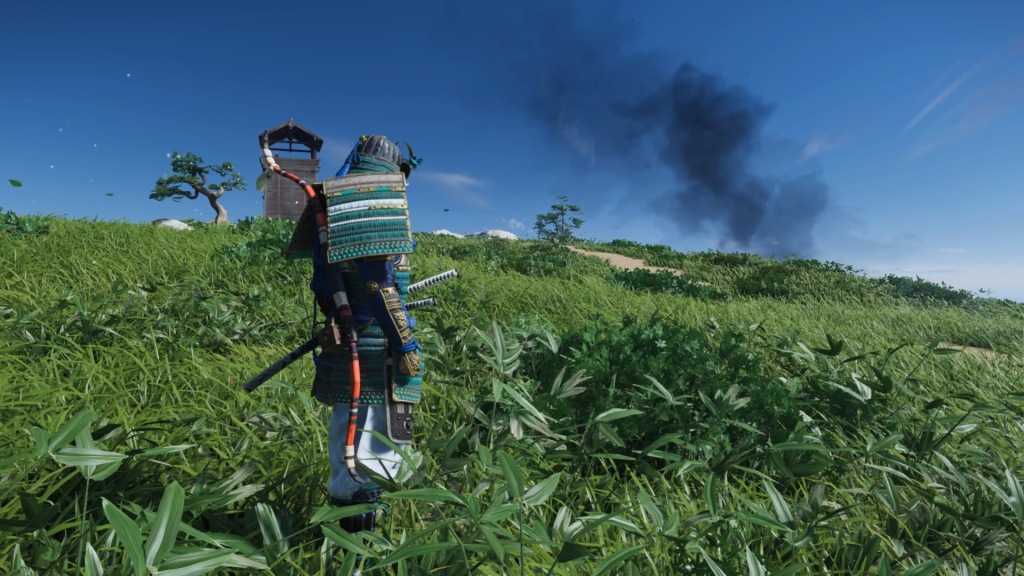

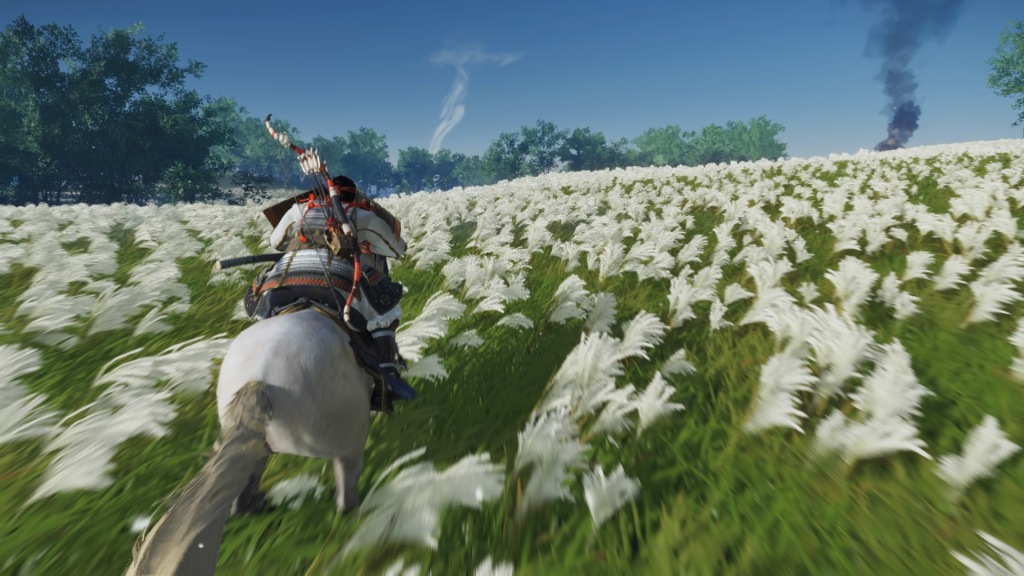

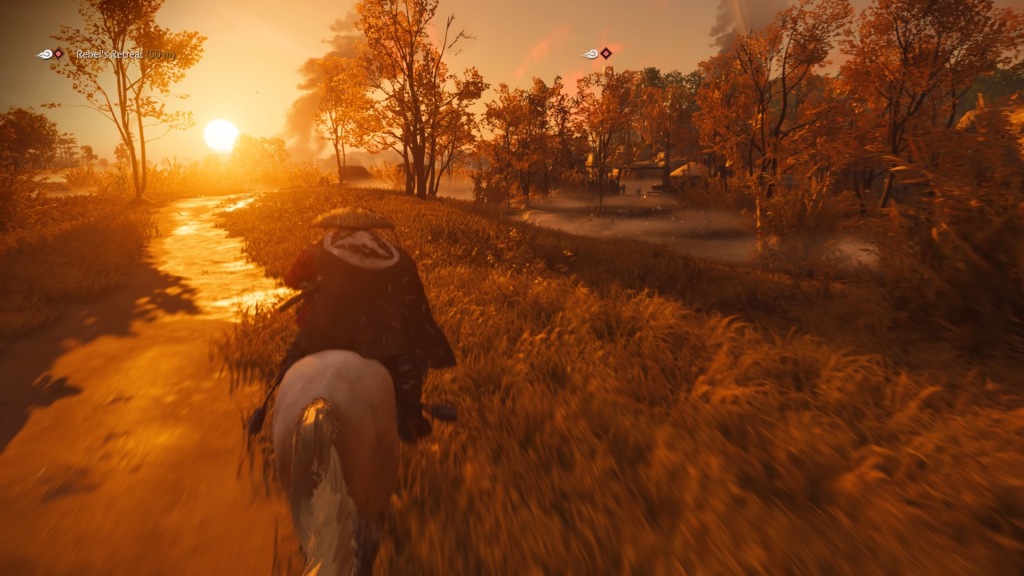


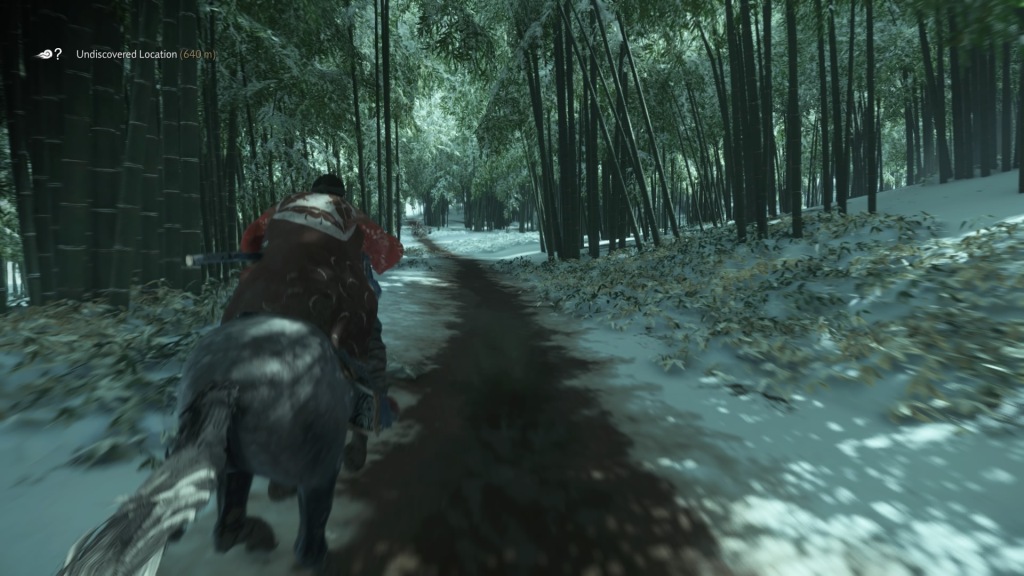


It didn’t quite hit me as hard as I’d hoped – the exploration and quest design felt dated, and I felt the open world venue would have benefited from a more linear design. But my complaints end there. The stunning beauty of Tsushima Island had me awestruck. Every corner turned leads to new, fascinating discoveries. I think of sunlight draping over a field stained with flowers, or the night sky contrasting a comforting fire in the distance. I felt peacefully distracted often and the game encourages you to take a respite and write Haiku in certain spots.
There’s plenty of swordplay and betrayal to be had, but it’s the quieter, reflective moments that will stick with me. Jin’s eagerness to save his country and people from the Mongol invaders is noble, but his sneaky methods are unsettling to the Samurai tradition. It’s a rare instance of attempting to tie gameplay into story. It doesn’t entirely succeed in that regard, but when you’re dueling a lone straw hat against the foggy backdrop of a misty waterfall, you won’t care a lick. The fact that Ghost of Tsushima barely made this list is just ridiculous and proof that this is a Top 10 of the highest quality.
9)

Trying to discuss 13 Sentinels: Aegis Rim without spoilers is akin to tap dancing on a minefield while wearing clown shoes. There’s nothing else like it. The story itself is a mish-mash of a dozen science fiction and anime/manga influences. This is Lost, mixed in with some Neon Genesis Evangelion. And The Girl Who Leapt Through Time. And Source Code. And Total Recall. And Solaris, Terminator, the War of the Worlds, E.T. and a few other Japanese shows that I’ve never seen. There’s an impending apocalypse, an invasion of kaiju robots and romance aplenty. There are mechs piloted by high school students, naturally. There’s time travel. Clones. Androids. Oh, and the story is told in a non-linear fashion AND there are 13 protagonists, all with their own motivations, friends and challenges. AND you get to choose (somewhat) the order in which you see the story unfold.
This shouldn’t work.
Adding to the odd nature of this game, the genre itself is bizarre – a Visual Novel paired with gameplay that’s a hybrid of Real Time Strategy and Tower Defense.
This really shouldn’t work.
I can’t even recommend this to anybody without a 15 minute lecture to assure them it does work. The localization of the mammoth script is expertly done. The developers are in complete control of this wildly ambitious plot and if you’re patient, the rewards are well worth it. I appreciated how each story was divided into 15 minute chunks and if I wasn’t feeling Ei’s story, I could zip over to Natsuno’s. If I saw Megumi in Juro’s story, maybe I could watch her next chapter to see what happened from her perspective. The more of the mystery you unfold, the better the it gets and you’ll soon be expressing your discontent when the game locks you out of a certain chapter until you progress elsewhere first.

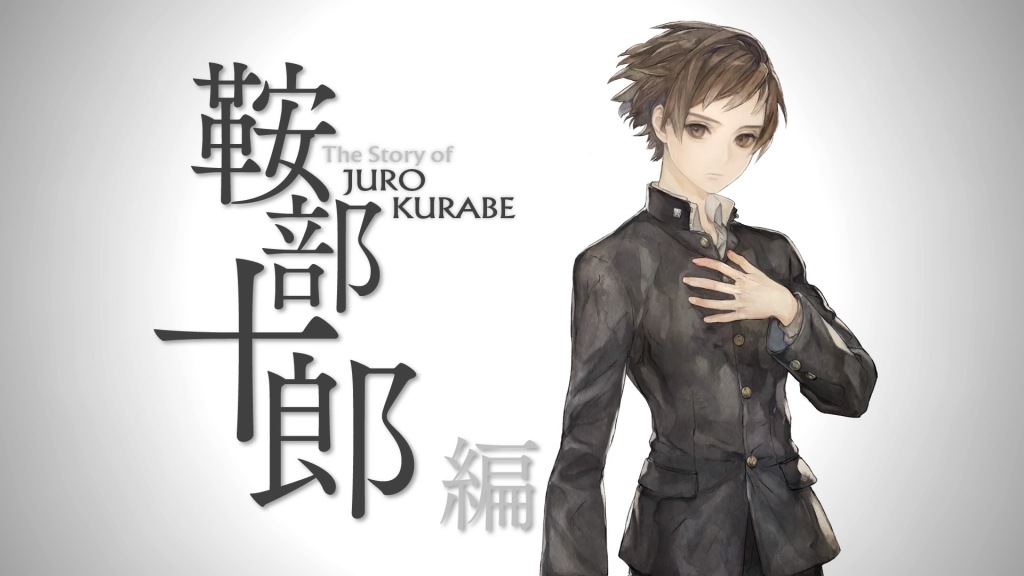


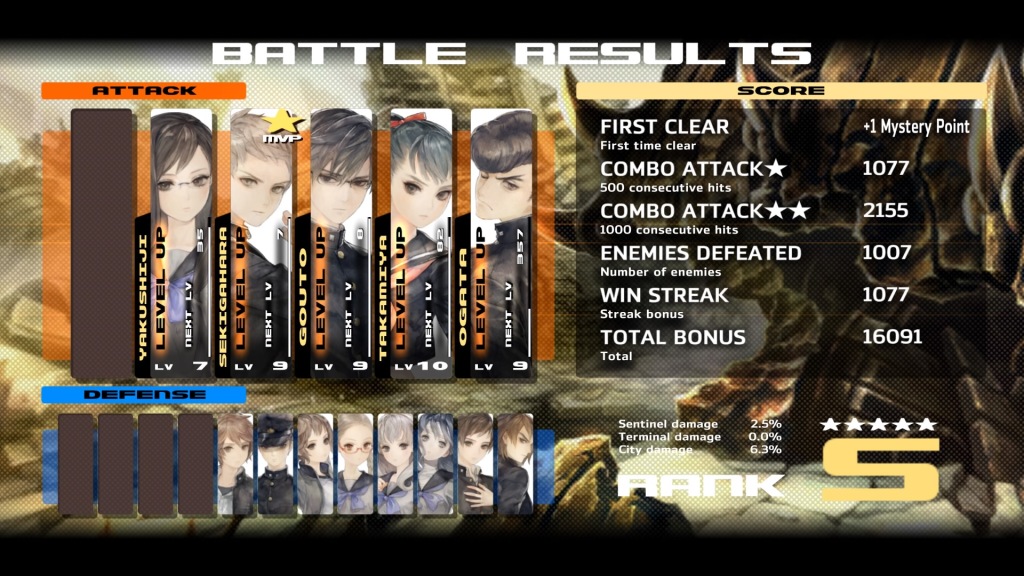
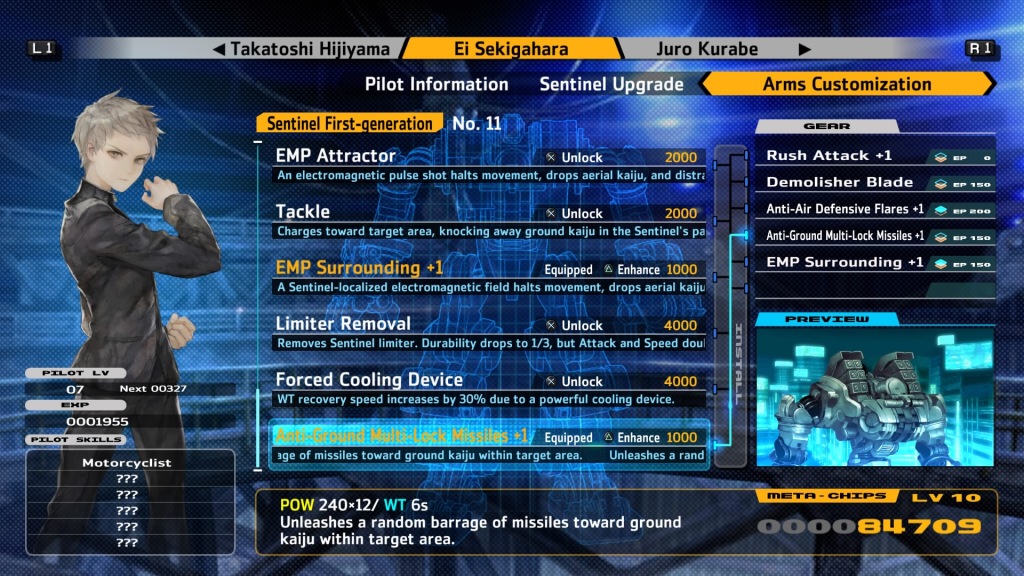




Vanillaware’s signature visual flair is here, and it’s never looked better. The backgrounds are stunning, and while the character animations are nothing to write home about, the artwork overall is drop dead gorgeous. If you’re into anime at all, you’ll be hard pressed to find a better video game that showcases that style. The soundtrack ranges from ominous, to bizarre, to outright joyful. There’s a very specific musical moment that is the game’s highlight, but I daren’t discuss here to avoid spoilers. If you’re curious, this article sums it up nicely.
The gameplay sections aren’t too stressful and the game forces you to use all your intrepid, young adventurers to fend off the Deimos robots. It’s not the smoothest experience – I felt I was spending more time in menus than I’d like and visually trying to determine which enemies were which was difficult. In the end, upgrading my Melee Mechs to jump attack a boss while my support Mechs had sentry guns and long range missiles to rain upon our enemies was a thrilling experience.
A 35 hour game where you don’t do all that much isn’t a winning sales pitch, but there’s a reason it’s number 9 on my list and it could have been a few spots higher. If you’re willing to try something different, there’s an unforgettable experience waiting. The ending cutscene gave me goosebumps. 13 Sentinels: Aegis Rim fully embraces science fiction and takes a huge swing doing so. I wish more developers were as brave.
Did I mention there’s a talking cat?
8)
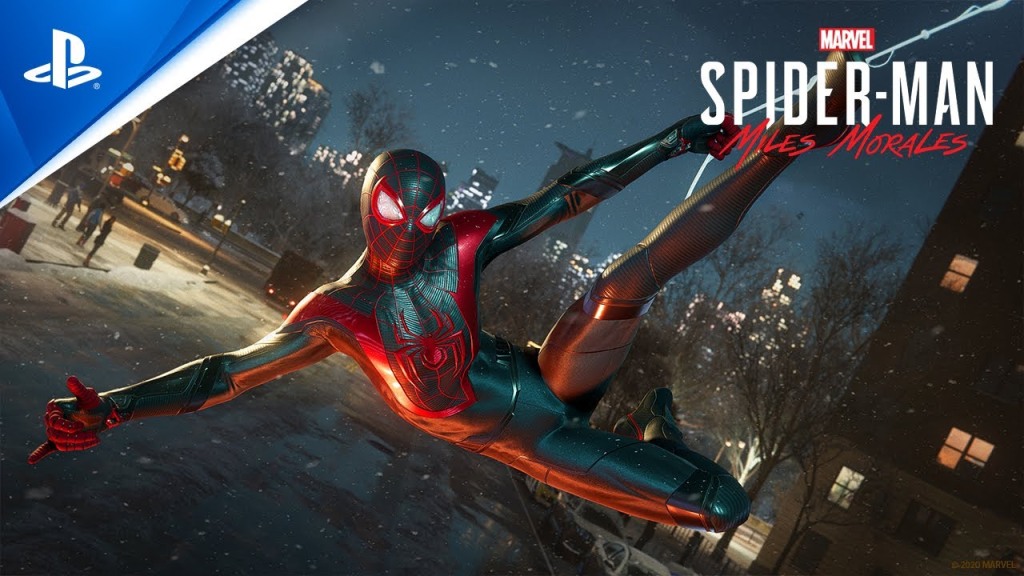
Take 2018’s Marvel’s Spider-Man, improve some of the mechanics, tighten the story, set it in East Harlem during Christmastime and you’ve got Marvel’s Spider-Man: Miles Morales. That’s not meant to sound dismissive, I mean it entirely as a compliment.
Is there better traversal in an open world game? I haven’t found it. Leaping off buildings and swinging around is so good (still) it’s unbelievable. Once again, I never wanted to use the fast travel option. Why would I? I can zoom and careen across the entire map in mere minutes. Nothing feels like a slog; because the physical scope is lean, the gameplay and story benefit. I never get bored, I was seldom dismayed or confused about where to go next. Exploration is a blast, and New York City looks just about as good as the real thing. I must admit again, I wanted a PS5 to see what the package could really show me.

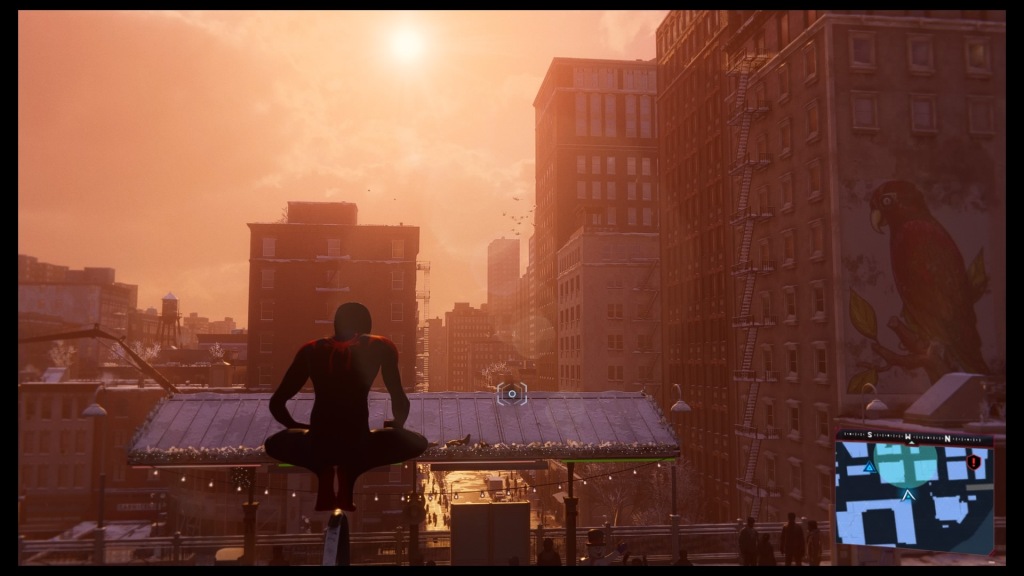



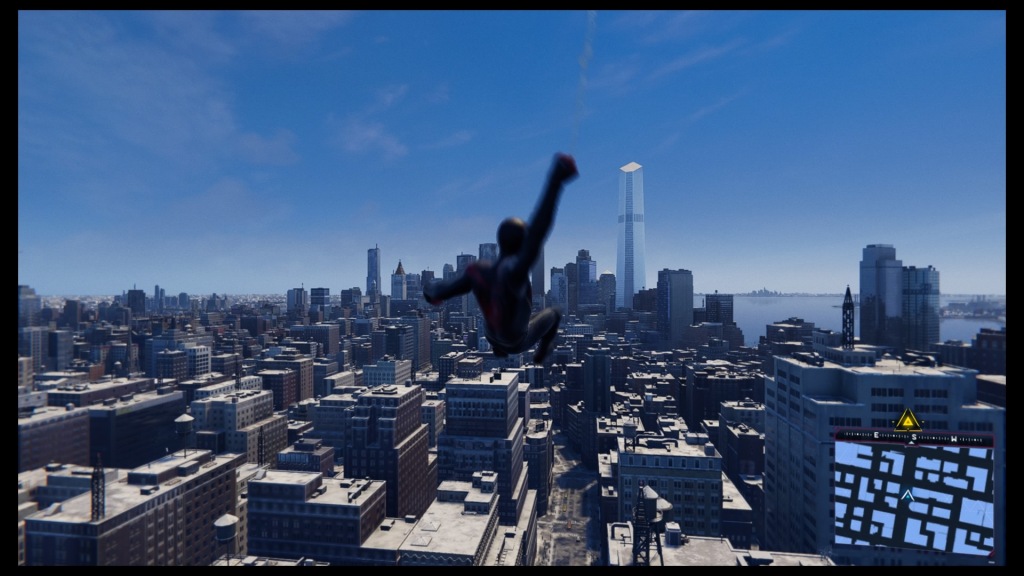
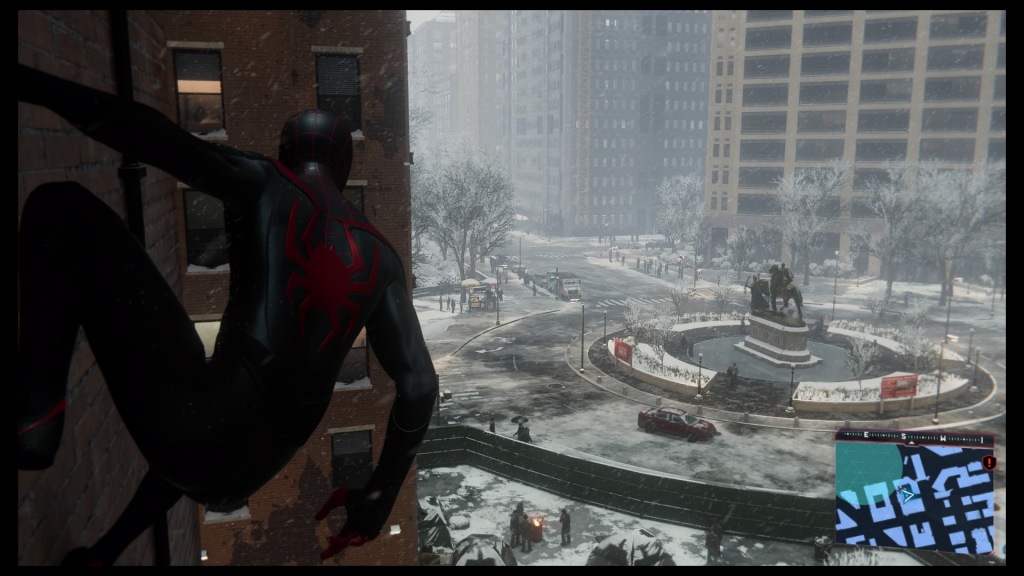
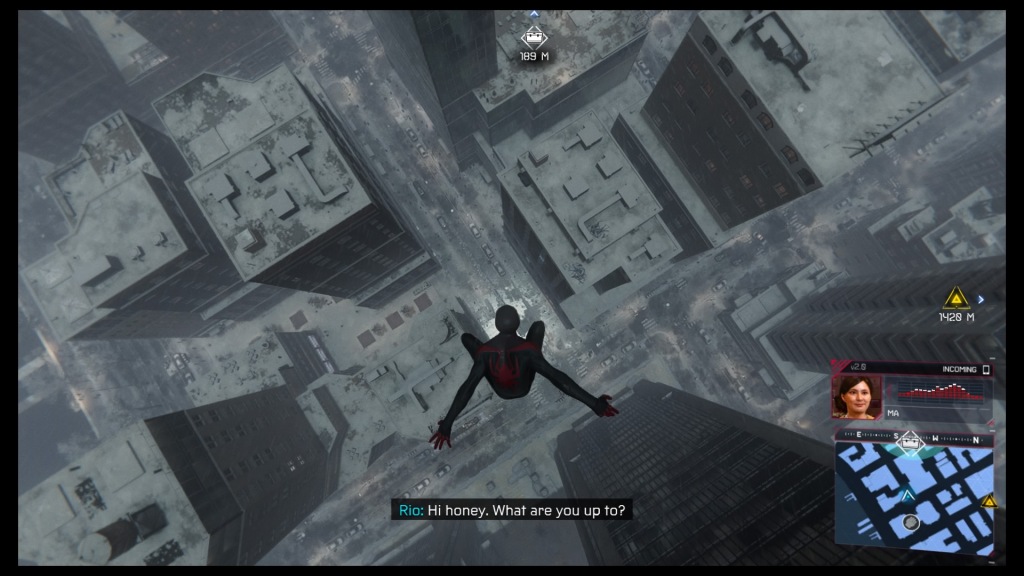


I was relieved to see them lean into Miles Morales as a character. He’s not merely a Peter Parker stand in; his family circumstances are interesting, he’s way less experienced, he’s cocky and uncertain. Being able to do tricks while flipping into the air was a great way to earn a bit of experience, but also show that this is Miles behind the mask, not Peter.
I cared about the side characters and the story. It’s deftly told. There’s no fat on this game, there’s no meat left on the bone. Less is more – the campaign is on the short side, but boss fights are thrilling and combat is even better than the 2018 version. I was happy every moment with this version of Spider-Man. Between this and Into the Spiderverse, Miles Morales has soared into the superhero pop culture stratosphere.
7)

I had two extremely frustrating moments during Doom Eternal that disqualified it from moving up any higher.
I detested the end boss fight. It felt too different from the rest of the game and I died a lot. I didn’t even play on a challenging difficulty, but the tools and tricks I’d learned apparently didn’t translate well. Maybe I was worn out at that point and I wasn’t thinking correctly, but it definitely wasn’t as enjoyable as it should have been.
The second point of blinding rage was due to a fatal bug. It happened about halfway through the game, I jumped on top of an elevator and the game crashed immediately. Tried again, crashed. Switched my graphics settings, crashed. Downloaded the latest updates and drivers for my video card, crashed. Gave up, asked the internet for help and found half a dozen solutions, none of which were successful. Finally, I switched to Windowed Mode and toyed around with a few other graphical settings and viola! Hop on an elevator, continue to rip and tear demons from from hell.
Phew.




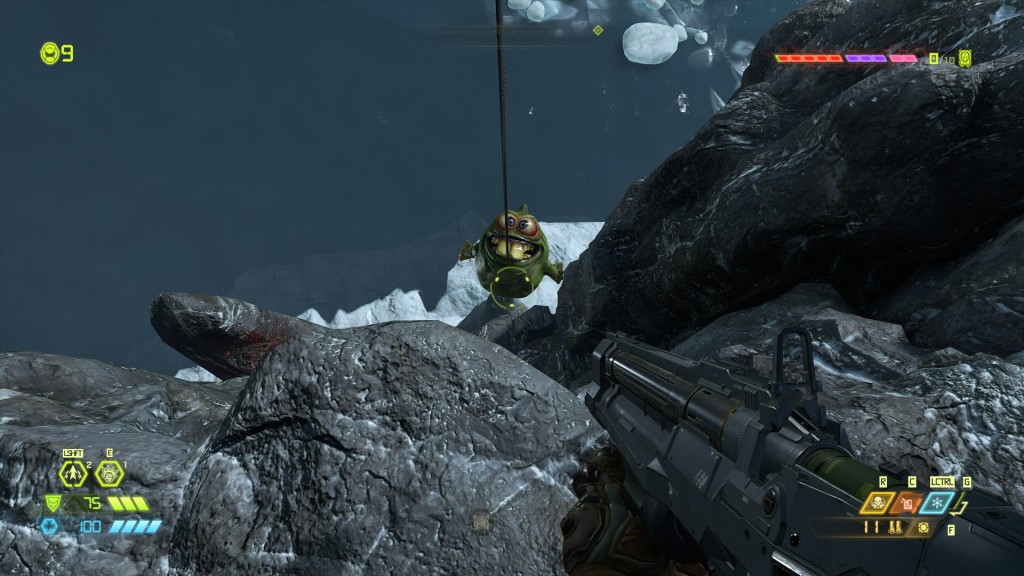

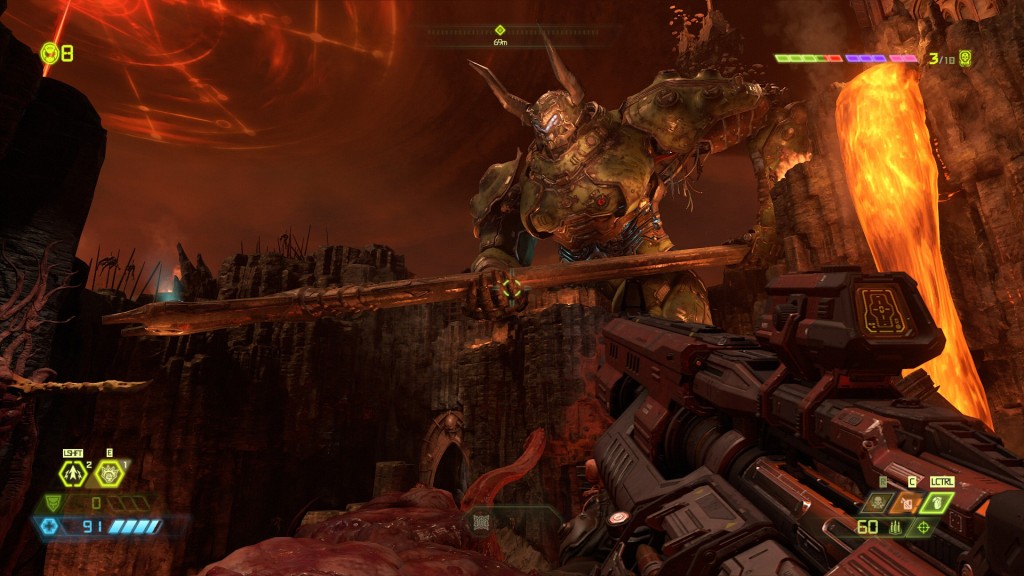



But what makes Doom Eternal my 7th favorite game of 2020 is the core gameplay which is mercifully phenomenal. Beyond description. It makes every other FPS feel like slow, pedestrian garbage. When you get moving, and you’re going to get moving, it’s a dance of death. Keeping track of your armor, health and ammo among dozens of enemies all trying to destroy you is mesmerizing. Successfully chainsaw-ing a weakened enemy to get that last bit of ammo you need to take down an even bigger enemy becomes pure muscle memory. Switching weapons on the fly to ensure you’re equipped for the situation seems impossibly difficult at first, but then impossible not to do when you master your arsenal. Searching for cannon fodder to heal up while three types of projectiles are seeking you out, and air-dashing to avoid the carnage elevates this beyond anything I’ve played before or since in this genre. This flow state is so good that it’s nearly a miracle of game design.
It’s too easy to get out of this flow, however. The endless Lore entries are a bore to go through and when failure occurred, trying to get my adrenaline back to the level I needed to clear a difficult room was a challenge. That being said, I still have the urge to go back and try the DLC, or obtain all the achievements. Anything to get back into that kind of arena. I’ve never had more fun shooting demons.
6)
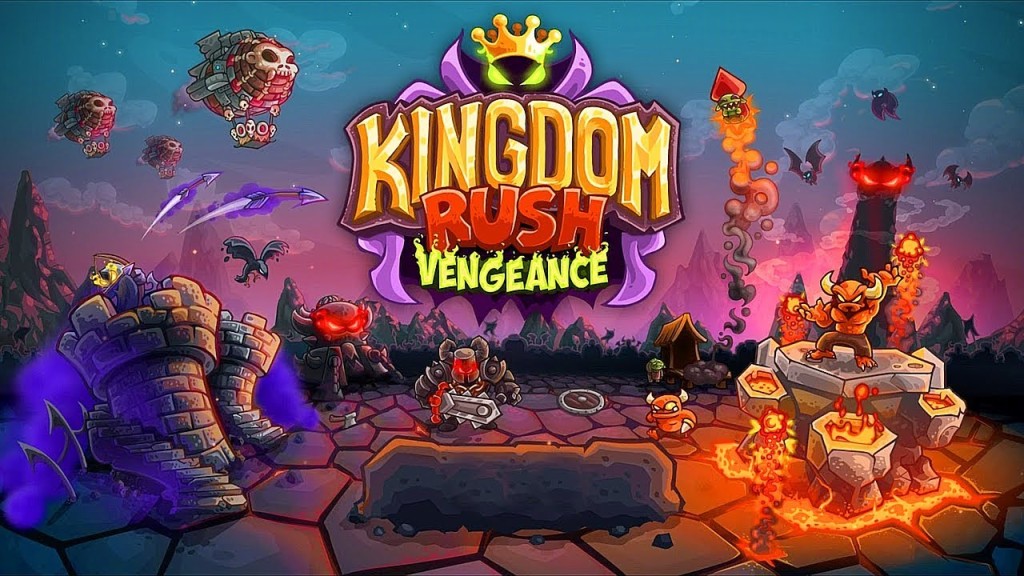
Hey, Kingdom Rush Vengeance came out in 2018! That doesn’t count!
Well, if other people can have Among Us on their 2020 list, then I can put Kingdom Rush Vengeance on my 2020 list. At least a version of this game was released in 2020!
The PC port came early and I couldn’t be happier. I love Tower Defense games. The only reason there hasn’t been more Tower Defense on my Top 10s is that you really don’t see high profile examples being made. Or, I’m an idiot and don’t do enough to seek out samples of a genre I adore.
The Kingdom Rush series offers the best of the best. The graphics are cartoonish, simple and totally apt for this kind of game. You need to be able to clearly see every enemy on the screen, what their behavior is, what attacks they’re winding up for and that’s perfectly done here. It’s not even the best Kingdom Rush game and I was instantly in love. Throw on a podcast and I will lose hours of my life trying to 3 star every stage. It’s about as close to an addiction as I’ll ever hopefully succumb to.

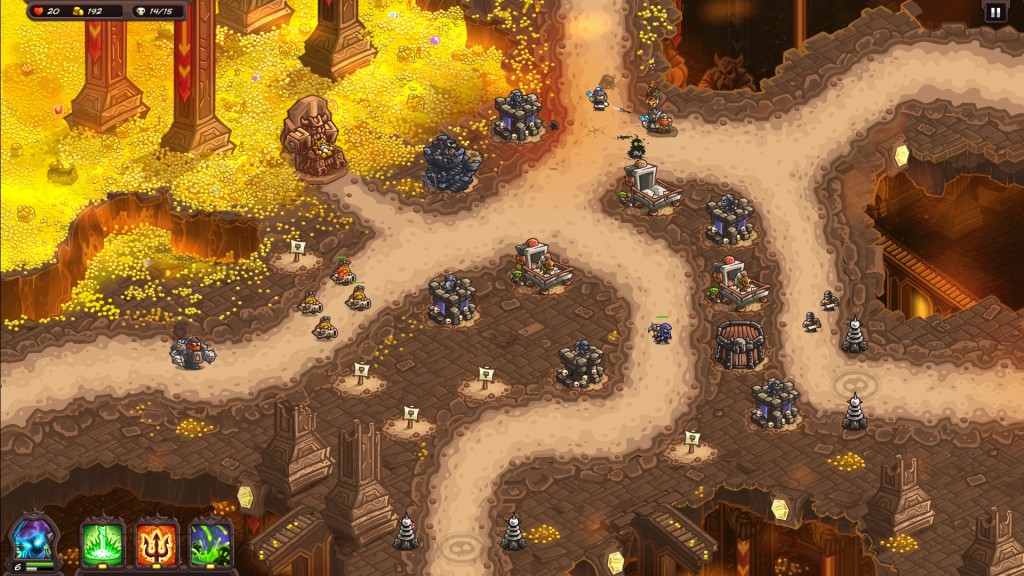
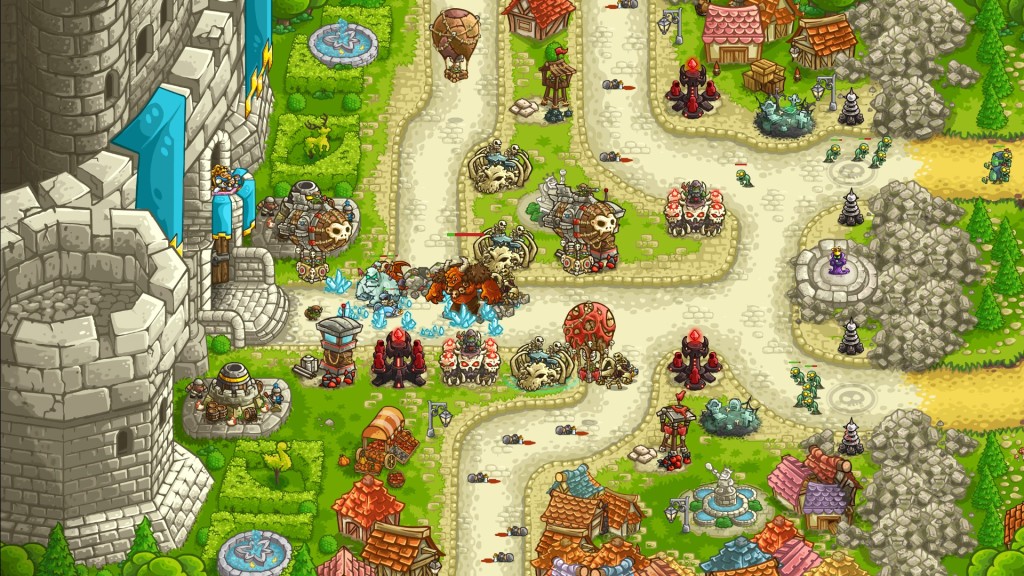


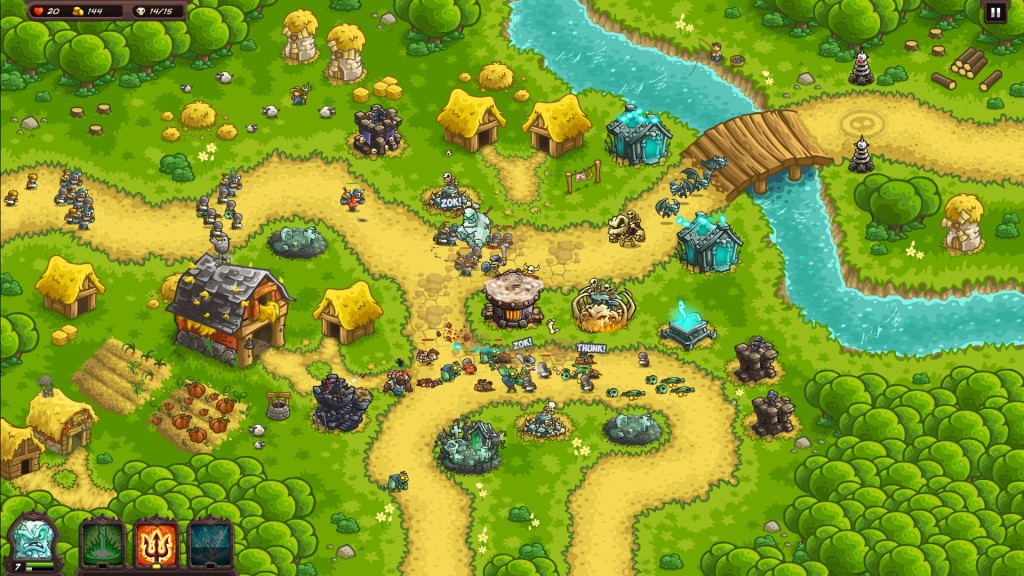

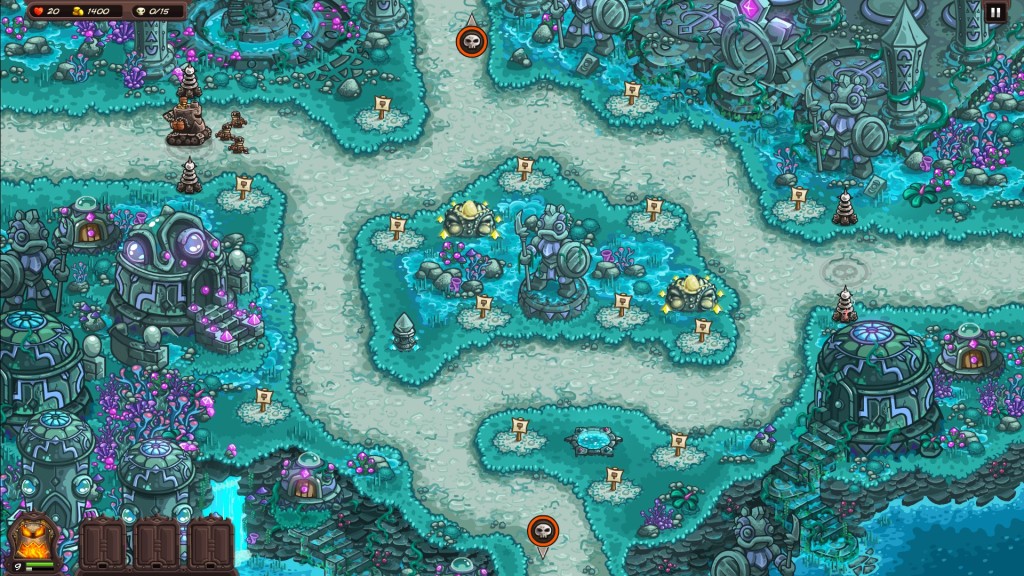
It’s such a satisfying gameplay loop. You can level up your towers, but the greater growth comes in knowledge of the level’s layout and enemy spawns. Which towers should I focus on upgrading? Focus on a single tower and grow it to an unstoppable obelisk of death, or ensure all my towers have a slight bump in power? Which hero should I take? How come that wave got through? Am I focusing on aerial enemies too much?
All of these thoughts came to me with each failure, yet I never felt discouraged. It only took one or two tries to get a foundation of understanding about which towers belonged where. The feedback on whether a plan was going to work or not is pretty instantaneous. All the towers have their own special abilities, and the varying designs of attack and defense lend themselves so well to experimentation and multiple playthroughs. I will play any and every iteration of Kingdom Rush until I get bored of Tower Defense. Which will be never.
5)

An astonishing game, a beautiful experience. What appears to be a pleasant, quirky sim management with cartoony graphics ends up being one of the most emotionally resonant, powerful pieces of fiction about death I can think of. Often this subject is tossed towards you with no real weight in video games. Enemies die by the hundreds – your goal is usually to defeat them, after all. Others have some shocking moments of main characters dying but it’s usually done in a way that feels exploitative and not in a way that inspires thought, grief or empathy. Spiritfarer succeeds in embracing the notion that one day we will all go, and that we will see others go. How do you deal with it? There’s no right answer. How can you possibly tell somebody how much they mean to you? What does it mean when they’re gone? There’s the blunt trauma of when they depart, but what about the times long after? A seemingly innocent item can suddenly yield a flood of memories and emotions.
Spiritfarer is one of the few games that mostly succeeds in tying gameplay to story. Your job as the Spiritfarer is to guide your friendly spirits in the afterlife, until they are ready to depart permanently. There isn’t any real challenge, so to speak. There aren’t incomprehensible puzzles or tough boss fights. It’s mostly talking to others, hearing about their past and relaxing. Fishing, growing vegetables, collecting moon-rocks and building little houses for your friends on your magical boat are the goals of the game, but not the reason for playing. Exploring towns or islands will eventually mean you’ll meet a spirit who knew Stella in life, or somebody who just wants to join you on your journey. See what’s out there. Maybe they’re about ready to go, maybe they’ll stay forever.



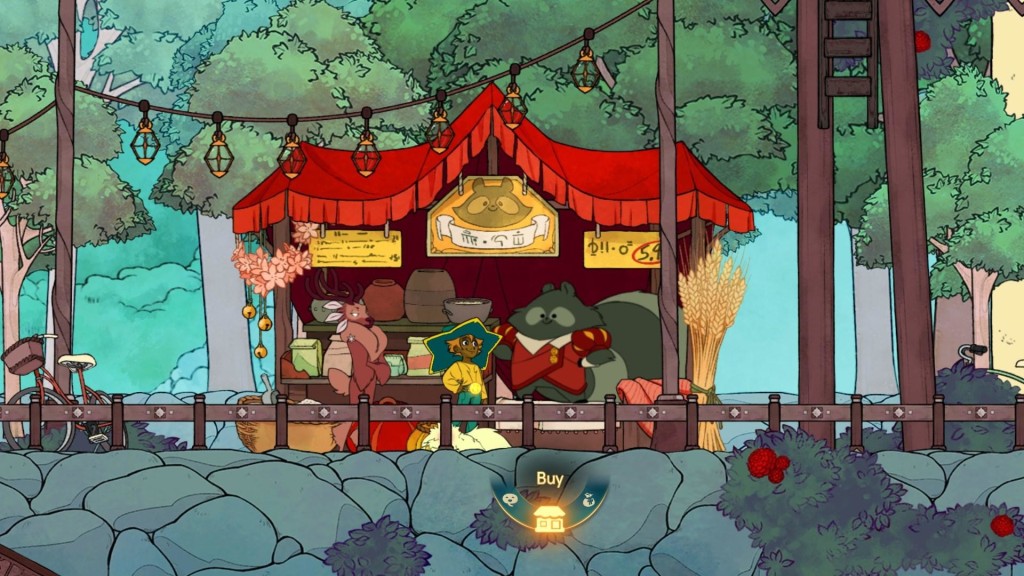



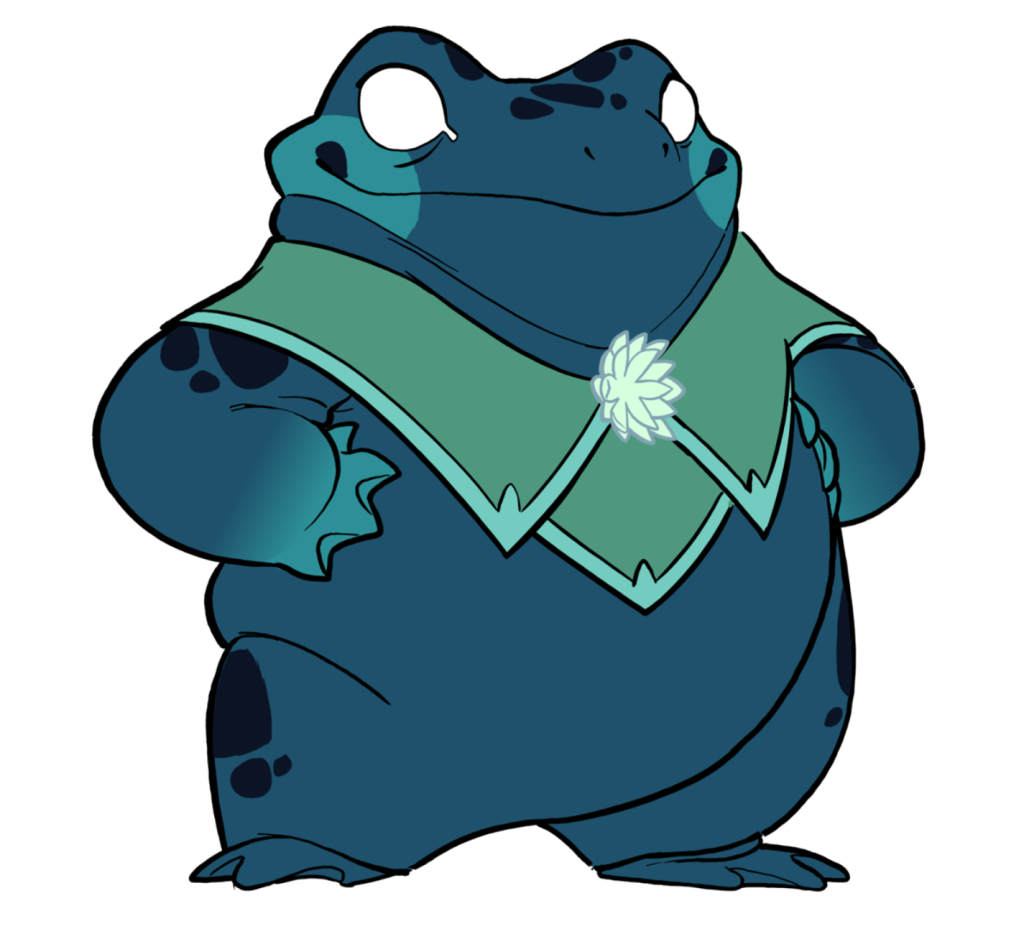
The contrast is what got to me. It’s such a bright, colorful world and most of the dialogue is filled with joy and light-hearted commentary about life’s little foibles. Then, one of your companions will drop a hint that maybe they’re getting too tired lately, or they’ll lament about a choice they made in life and are now realizing the consequences. There’s a reason the main character is silent; this is a game about listening and being there for somebody in their final hours.
Two characters in particular will remain with me for a long time. Alice is clearly a nice, little old lady. She’s also a hedgehog. She waddles around being very cute and pleasant. She talks about her family and how she misses taking care of children. It’s clear that she’s suffering from some kind of dementia…or did, when she wasn’t a spirit hedgehog.
The bit that really got to me was a task that popped up in the menu. Alice was getting old and wasn’t able to climb ladders anymore, and do you think you could place her house on the bottom floor of the boat?
Oof. I can’t help but remember my own Grandmother who passed away a few years ago. Near the end of her life, she was very slow when I picked her up for our movie dates and had difficulty climbing stairs. She was 93 when she died and had led a good long life, but that doesn’t necessarily ease the mourning. When that task popped up, I knew Thunder Lotus Games had done their homework. They clearly respect and show emotional empathy towards a very difficult subject matter. Perhaps the most difficult.
I also can’t ever forget Atul – your paternal uncle Frog who is the most bombastic of the entire group. He’s a treat. He loves hugs. He’s overly optimistic. He’ll jump up and down from great heights just to give you a present. I loved Atul. Everybody does. Even his incomprehensible dialogue always seems so chipper. His sudden disappearance is confusing. Painful. No ceremony? I don’t get to properly say goodbye? That didn’t happen with any of the other characters. That isn’t fair.
Indeed.
The soundtrack is sublime. I can’t get enough of “Meteroids“. The main theme encapsulates what Spiritfarer is all about. It’s a mysterious, whimsical, uplifting and truly heartfelt story. What an amazing little game.
4)

It’s at this point where I legitimately could’ve made the case for any one of the following four games to be number one. It’s a shockingly good group, all for entirely different reasons. This is the point where I have to dig deep to find nuggets of criticisms. I can’t have four champions, after all.
The Last of Us Part 2 is a pinnacle of modern design in many ways. It is peerless in terms of its cutscene direction and facial capture. These aren’t video game characters in a cutscene, these are actors that just happen to be digitized. They move, speak and react like real people. The graphics are astounding, and like the first The Last of Us, the level of detail shown in the post apocalyptic world is staggering. Every abandoned apartment has its own unique furniture, its own layout. There are different types of TVs, different kinds of clothes hanging in various types of closets and drawers. The amount of work shown by the artists and designers is beyond impressive.
This isn’t all just to show off. What this level of detail and realism does is suck you in and empathize with the characters. It reminds you, constantly, that this was a world once lived in by all kinds of people. Because there are constant visual prompts of normal lives, the harrowing existence of surviving humanity is that much more brutal.

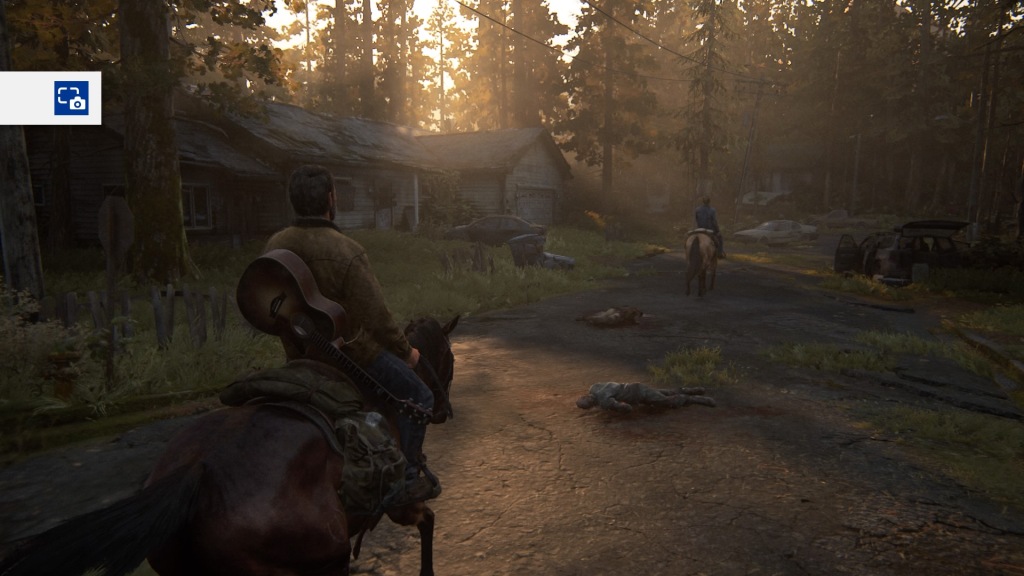



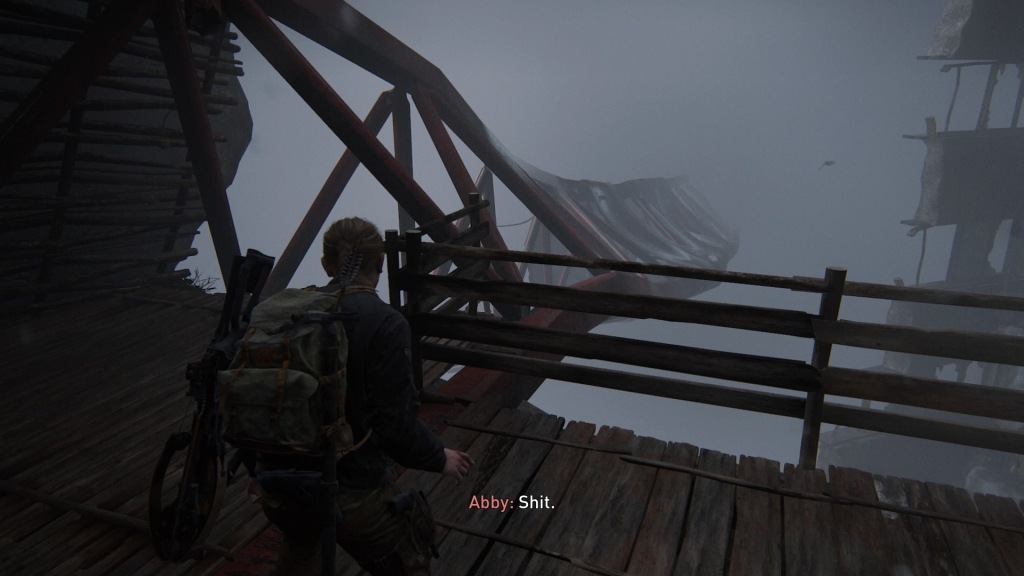
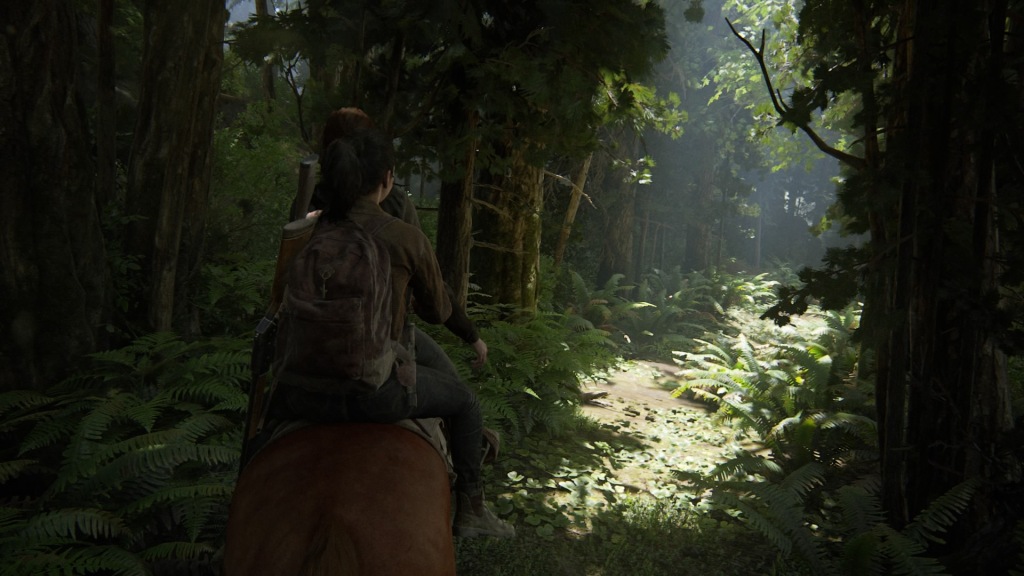



The Last of Us Part 2’s strengths are a double edged sword. Because everything looks more realistic than ever before, the violence becomes that much more gruesome. I cringed often playing the game, and had slight physical reactions to some of the harsher scenes. Killing mushroom zombies is one thing, watching a cult “clip the wings” of somebody with a hammer is another. I could really only play a few hours at a time before needing to take a break. It is emotionally draining.
I suppose the timing is unfortunate. This was a very difficult year, obviously, and I understand if player appetites didn’t extend to wanting to play a visceral trek through a civilization that’s been dealt a horrible blow by a pandemic. It also doesn’t help that the campaign is long, overly so by about five hours in my estimation. I have read some of the criticisms of the plot and specific character’s fates, but I couldn’t disagree with them more. This is an epic video game story and Naughty Dog really tries something different here.
It comes with caveats, but The Last of Us Part 2 is phenomenal. I haven’t even scraped the surface about some of the amazing set pieces: the hospital, traversing construction cranes high above the streets or the theatre showdown, to name a few. Or the impeccable variety of ways to approach combat. It’s a full, risky, deep and incredible experience.
3)

They did it.
The crazy sons of bitches, they did it.
After years of whispers and rumors, Square Enix finally managed to release a remake of their most successful, flagship title. They took a ton of liberties – this is not a shot for shot remake, not by a long shot. The entire game takes place in the city of Midgar and it ends on a cliffhanger. I wasn’t wild about either of those choices, but I couldn’t help but be seduced and am fully on board with waiting for part two.
The soundtrack completely swept me away. The original Final Fantasy 7 has some of the most iconic, catchy tunes to ever grace gamer’s ears and they sound amazing here. I’m sure most Final Fantasy fans have heard dozens of orchestral versions and remixes of the main tunes since 1997, but there’s something different when they’re accompanying you as you’re playing a brand new game. Even the new tracks rock; I couldn’t stop listening to “Tonight’s Corneo Cup” if I my life depended on it. “Collapsed Expressway” is equally fantastic. Most importantly, the new tracks feel like they could have been and should have been in the original. It’s enough to make me smile until my face hurts.
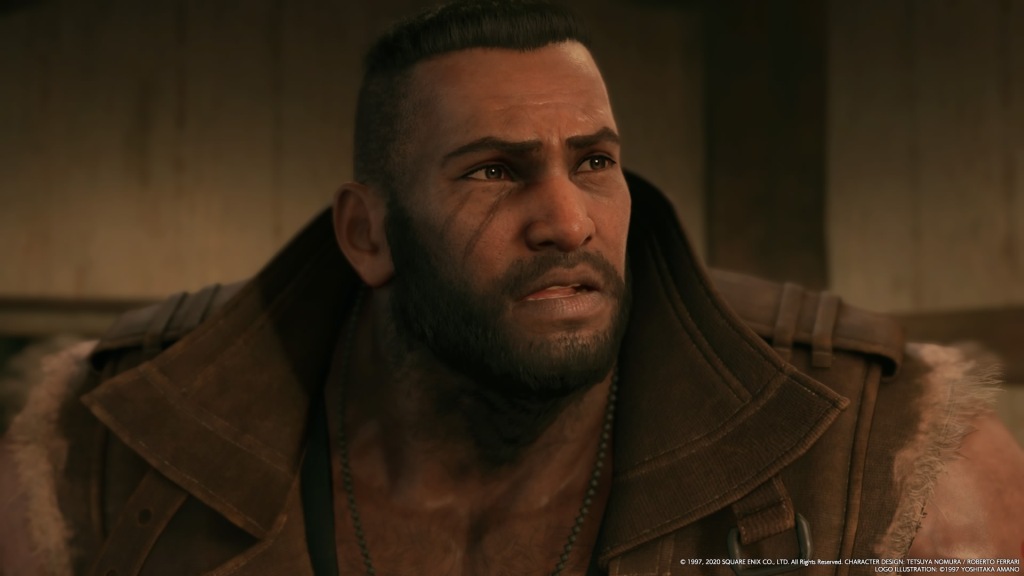
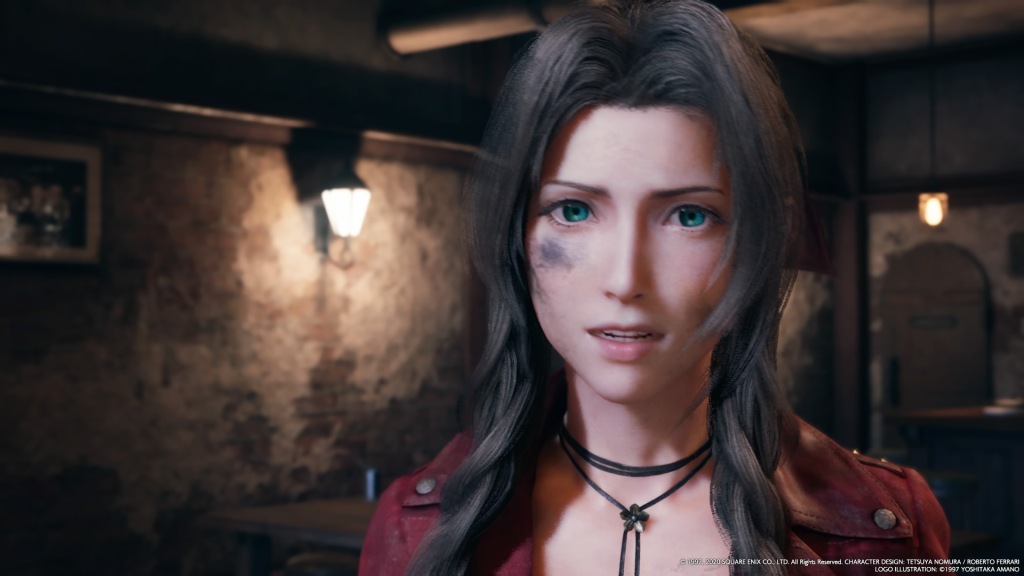

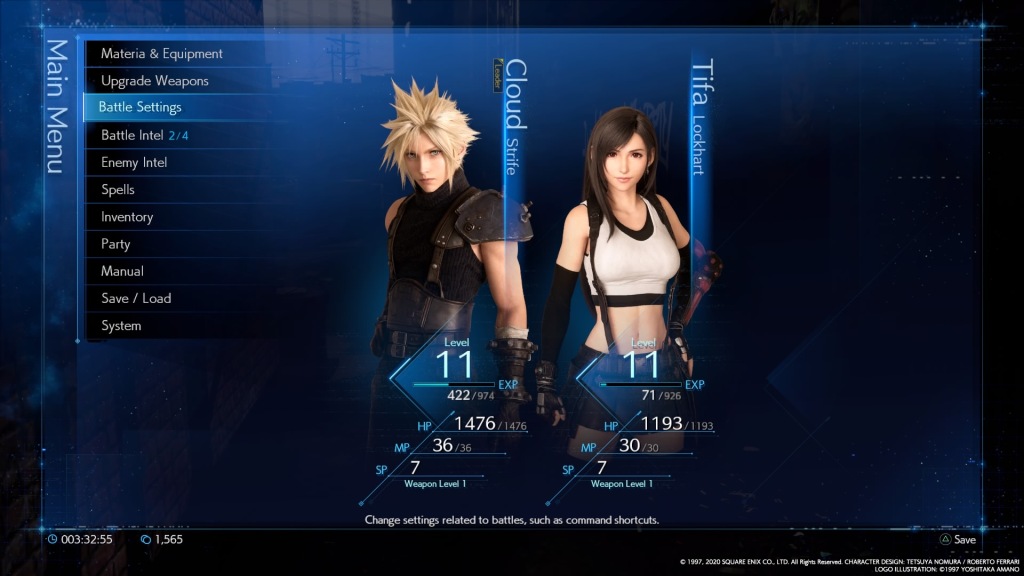

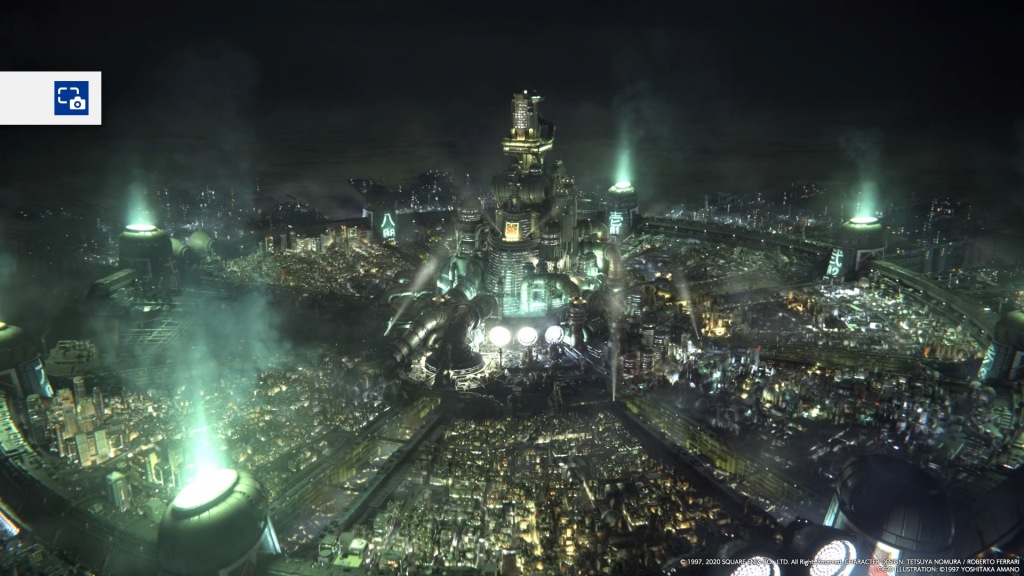

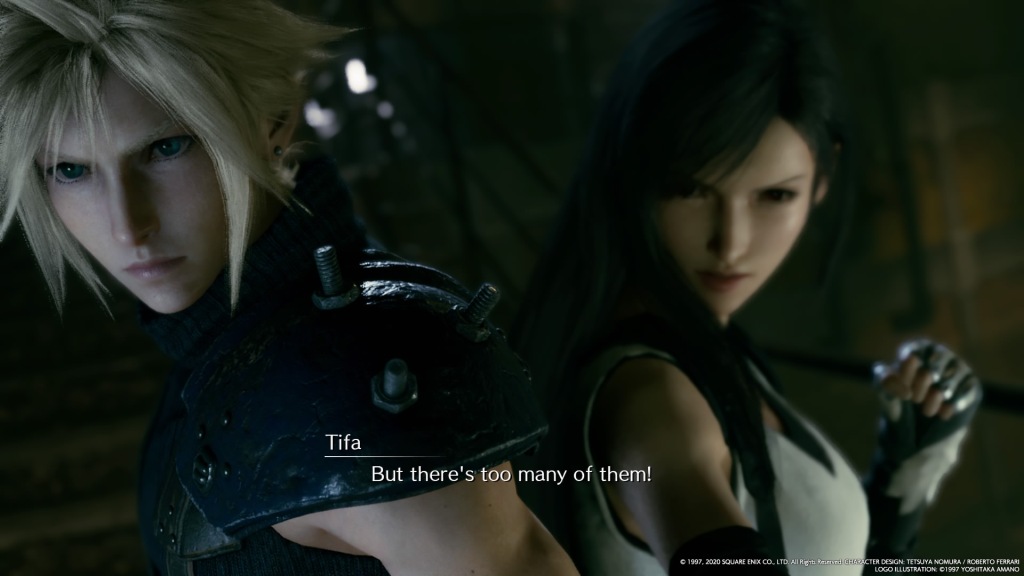

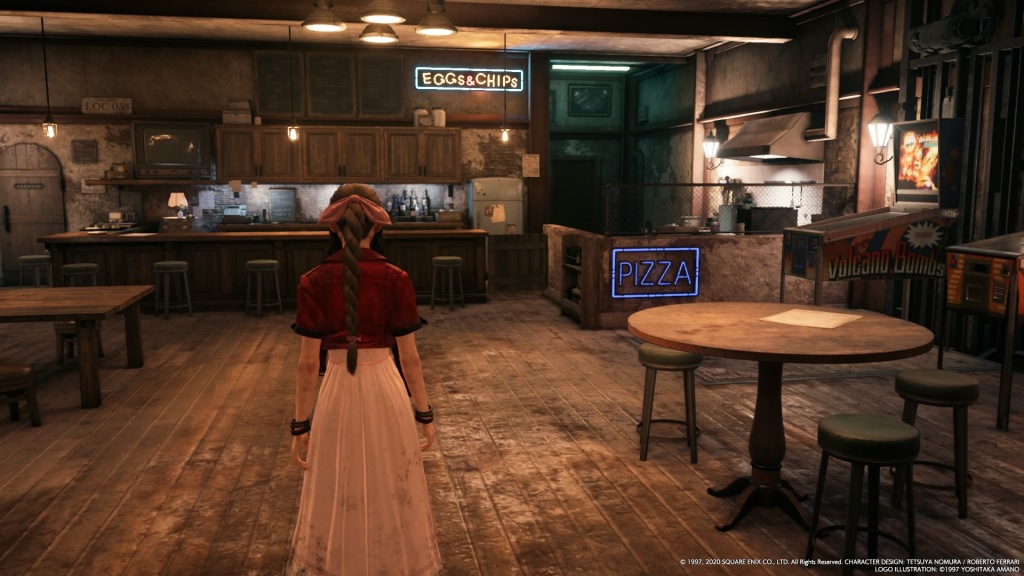
Aside from a few unimportant areas, the graphics are absolutely stunning. They’re nearly right up there with The Last of Us Part 2 in terms of character models and, due to my unyielding fanboyism for Final Fantasy, I prefer them.
The battle system did away with the turn based style, but kept remnants of it which results in a superb compromise between action and real-time. I was addicted to upgrading everybody’s Materia. The story pulled me in, with expanded emphasis on the side characters that barely got a mention in the original. There’s still some silly stuff, but that’s par for the course for a JRPG. It’s gorgeous, it’s fun, the songs are masterful. It totally met my expectations, and more. If the last section was a bit more clear and they hadn’t broken up in the game into two (or three?) parts to come, this could very easily have been number one. If they give this kind of treatment to a Final Fantasy 6 remake, I’ll tell you right now it’s already getting number one in a future Top 10.
2)

Once again, an Ori game comes this close to being my favorite game of the year. Like in 2015, this might as well be a coin toss. As good as Ori and the Blind Forest was, Ori and the Will of the Wisps was even better. I’ve never played a more beautiful game. I promise you, the below static screenshots do not do it justice.
It’s my all time favorite 2D Metroidvania. The story, while sparse in comparison to the likes of Last of Us Part 2 and Final Fantasy 7 Remake, is well told that culminates in a flawless ending that is as heartbreaking as it is magnificent. It’s not as difficult as Ori and the Blind Forest, or as original, but the visuals are better, the combat is vastly improved and the overall package is more sound. Every choice Moon Studios made about the gameplay is the right one. To me, the most crucial elements of a Metroidvania are traversal and backtracking. If I’m not keen to do either, the game has failed me. It’s one of the reasons Hollow Knight wasn’t quite as high on my Top 10 of 2017 as I would have initially hoped; combat and visuals rocked, travelling and backtracking were a pain in the ass. Ori is the king of the mountain in this regard. I was always trying to double or triple jump to a hard to reach area. I always wanted to visit spots on the map I had been blocked on previously. I zipped across previously explored rooms with the greatest of ease. Whatever Moon Studios sells next, I’m buying. No questions asked.


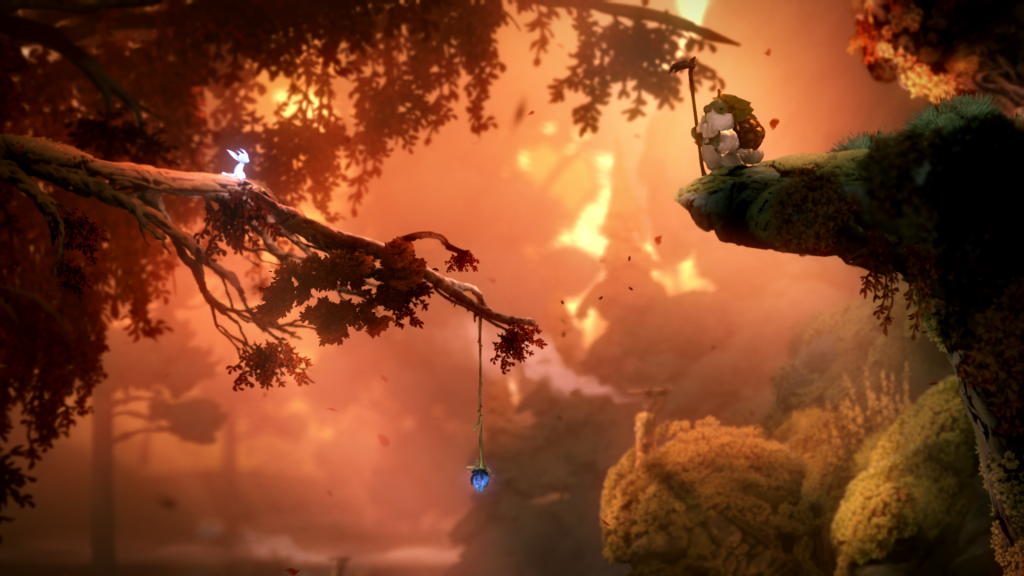





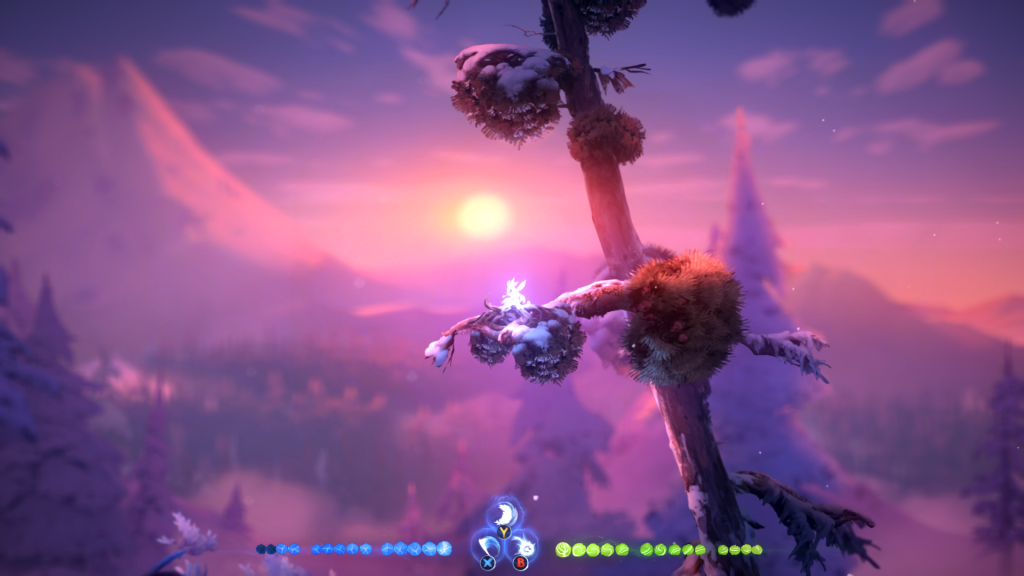

It’s warm and cozy. If Disney or Pixar’s magic were translated into a video game, Ori would be the result. I know some players will miss the unforgivingly difficult escape sections from the original – there’s a few nods to that here, but for the most part, it’s an easier experience. It’s not devoid of challenge, but I think Moon Studios were aware of player’s reservations and shifted the challenge to boss fights, which is fine by me. I’ll tag along for any ride as long as I get to dash and swim and burrow and explore and make friends with all the happy critters of the forest who need my help. Every upgrade sought and found, every boss defeated was just a little more motivation to keep going, not that I needed any additional justification. Every minute playing Ori and the Will of the Wisps was a treasure.
It’s no surprise the music is accordingly perfect. Melancholic, cheeky, adventurous, hopeful and daring tunes litter the playlist. “Sanctuary in the Glades” has a hint of “Do you Hear What I Hear” and I feel so safe when I give it a listen, so comfortable. It’s Christmas in two minutes and 45 seconds, and Ori and the Will of the Wisps is a godsend in 11 hours.
1)
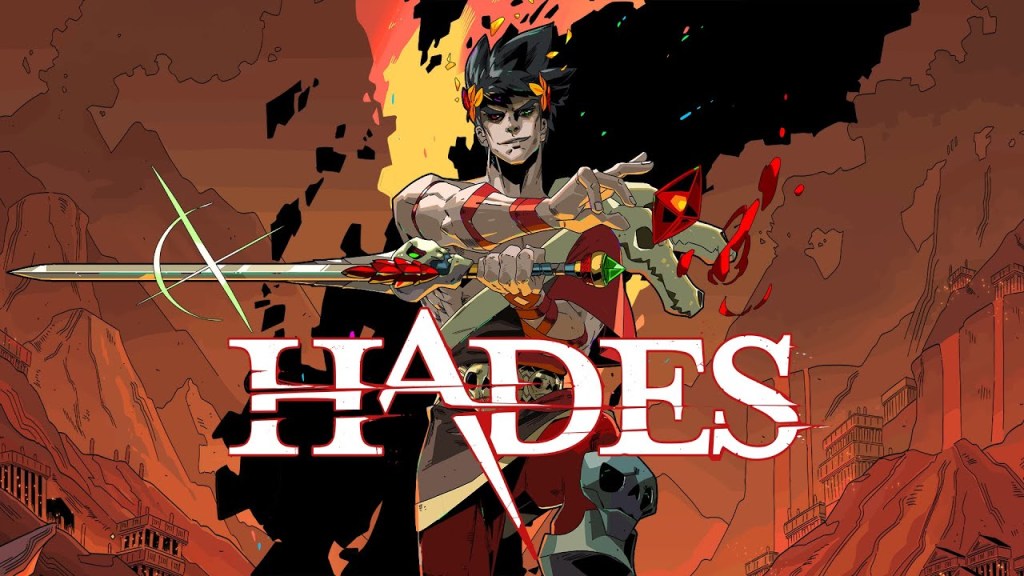
It’s been a very long time where I found something that occupied my every waking thought. A game that completely enraptured me from beginning to end. I should’ve seen this coming; Supergiant has had representation on my Top 10s every time since I started back at Snackbar Games and this is their magnum opus. This is even better than Pyre, and I absolutely loved Pyre. It’s a Roguelike or Roguelite that feels more like a Beat ‘Em Up and a Hack n’ Slash that stars Ancient Greek Gods. As the son of Hades, Zagreus, you’re trying to escape the underworld. Your father and his maze will ensure you will fail, but not for long.
I’m having a tricky time fully explaining, so I’ll go ahead and say it is nearly a perfect video game.
The art style is superb, everything is stylish and sexy. The gameplay loop is beyond addictive, the choice of weapons and variety of boons ensure no two runs will ever feel the same. The personalities and voice acting of the cast are professional, charming and hilarious. The design of them calling back to your results of previous runs and poking fun at you makes everything feel connected. I’ve never been this excited to keep playing a Roguelike for story purposes, and I doubt I ever will again.


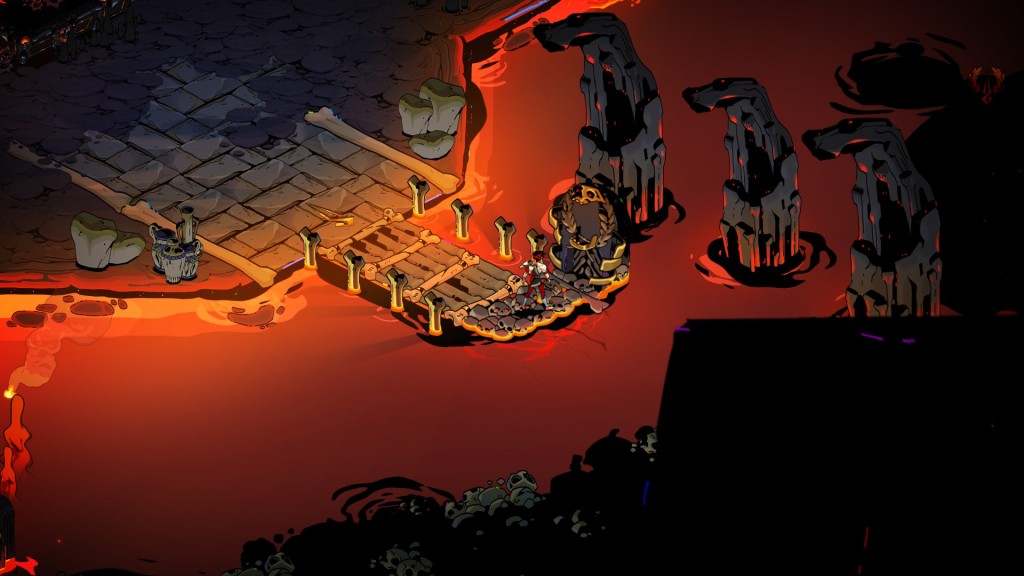


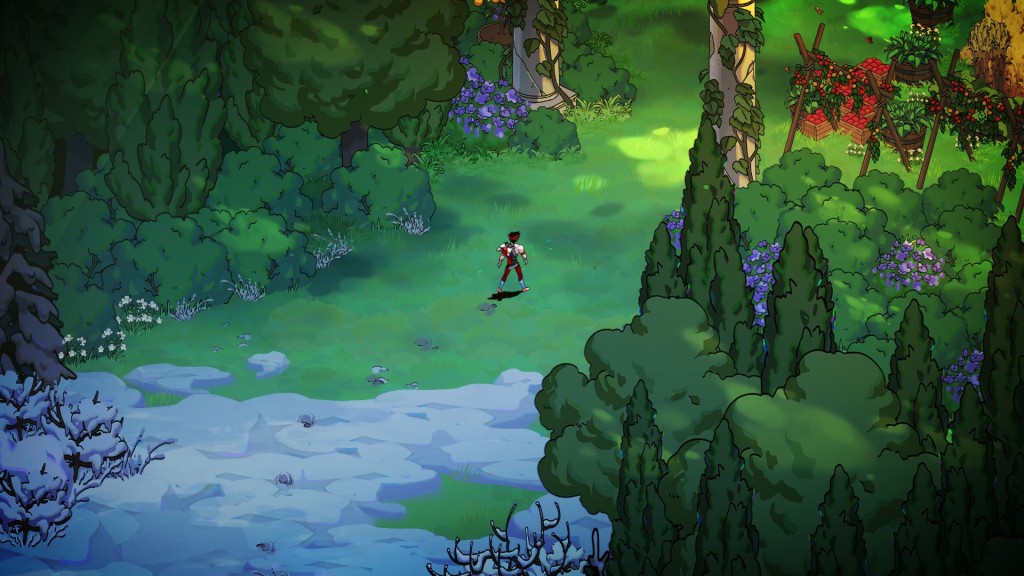


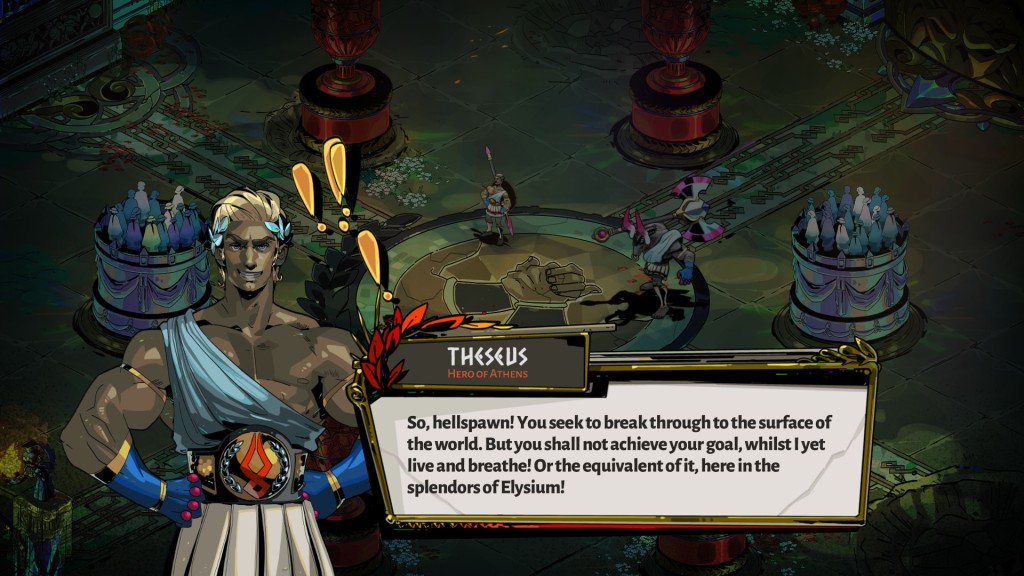

The controls are flawless. I never felt like a death was cheap, or unfair. Every room was a new playground of death and destruction, and the inevitable carrot on a stick was never very far away. It takes so little time to master the controls and I found myself experimenting with weapons and builds and items, trying to find one that suited me. It only took a few runs to realize that this wasn’t a game that painted you into a corner. EVERY weapon and EVERY upgrade can be useful, particularly if it syncs well with your previous choices.
All my friends I recommended this to took to it immediately. The forgivingly short runs, and the ability to save mid-run, meant those with few recreation hours still managed to sink their teeth into it. Eric’s constant updates on how much further he got, which boss he died on and which weapon build he recently got only enticed me to go back and play another few runs. Even after 35 hours, I want to run into Uncle Poseidon, merry as always and wanting to help me with a new cast. Or be tempted by Dionysus with parties and wine and poison effects. Or partnering with Ares to deal more damage, or accepting Athena’s help to avoid enemy projectiles. And then, you’re back at home again regardless if you won or not.
It’s brilliant. There’s a reason it’s on a million Top Ten lists this year, and I’m sorry to disappoint if you were looking for something more original, but I can’t help it. Every aspect of Hades works in tandem with each other. Beyond that, Supergiant shows real clout when they make a game like this and still treat their workers with dignity and upend competitor offerings with a fraction of the budget. I don’t usually factor the price of a product in my rankings, but the mere concept that a game that costs less than $30 Canadian should be humiliating to massive studios that charge $79.99 for their “AAA” experiences.
Supergiant deserves a standing ovation. Take a bow. Hades is my game of the year.